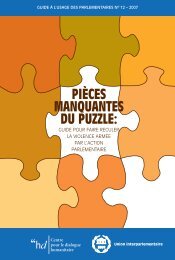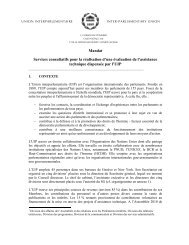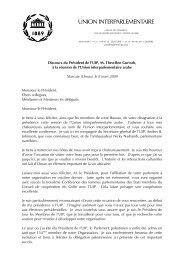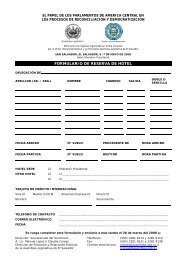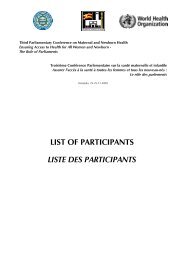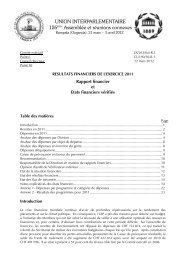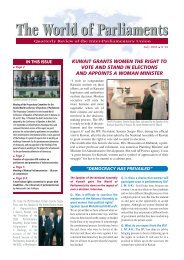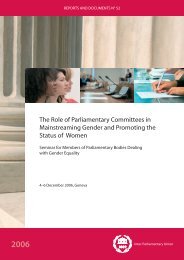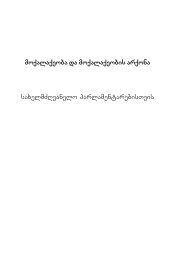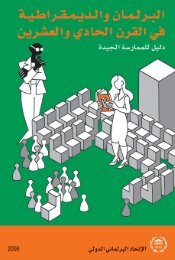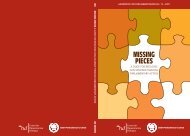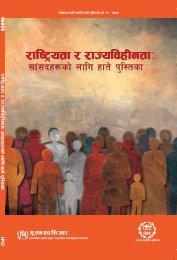Les femmes rwandaises et la campagne électorale - Inter ...
Les femmes rwandaises et la campagne électorale - Inter ...
Les femmes rwandaises et la campagne électorale - Inter ...
Create successful ePaper yourself
Turn your PDF publications into a flip-book with our unique Google optimized e-Paper software.
Rwandan Women and the Electoral Campaign • 30 - 31 July 2003<br />
The Electoral Campaign: Media Re<strong>la</strong>tions<br />
Ms Phoebe Asiyo, Constitutional Commissioner<br />
Chairperson of the Women’s Political Caucus, Kenya<br />
Introduction<br />
A candidate's task is to select an appropriate media to mark<strong>et</strong> the message. The steps to be taken in selecting an<br />
appropriate media are: deciding on the desired 'reach', 'frequency' and 'impact'; choosing among media types;<br />
selecting specific media vehicles and deciding on media timing. Media selection involves finding the most costeffective<br />
media to deliver the desired message and level of exposure to the voters.<br />
• Reach is the number of voters exposed to a particu<strong>la</strong>r media schedule at least once during a specified<br />
time period;<br />
• Frequency is the number of times within a specified time period that an average voter is exposed to the<br />
message;<br />
• Impact is the qualitative value of an exposure through a given medium.<br />
The first exposure is unique. It should, therefore, be timed very carefully. The most common reaction is a<br />
cognitive response. The second exposure is a stimulus, producing various reactions. The third exposure is a<br />
reminder.<br />
When choosing a media type, a candidate has to know the capacity of the media to deliver reach, frequency and<br />
impact. Media types can be television, radio, newspapers, magazines, out-door advertising (such as billboards,<br />
posters) or direct mail.<br />
The candidate has to decide on a media type that is most cost-effective -- if it is radio there are some choices.<br />
The same applies for television, newspapers and magazines. The major considerations would be:<br />
1. Circu<strong>la</strong>tion: the number of physical units through which the message is distributed;<br />
2. Audience: the number of people exposed to the vehicle (e.g. radio listeners);<br />
3. Effective audience: the number of voters exposed to the vehicle.<br />
Media timing is another important consideration. Too soon, and the audience is likely to forg<strong>et</strong>. Too <strong>la</strong>te, and the<br />
effect is minimal. It is important to make friends with the media and not fight them. A media person should be<br />
included in the campaign team where possible.<br />
Campaign P<strong>la</strong>nning and Strategy<br />
Campaign p<strong>la</strong>nning is the bedrock of a campaign and can be compared to a business p<strong>la</strong>n written by a new<br />
entrepreneur. It is a well thought-out p<strong>la</strong>n giving d<strong>et</strong>ails of how every aspect of the political enterprise will be<br />
handled.<br />
Campaign p<strong>la</strong>nning is about developing a p<strong>la</strong>n and animating it. It is a living process that responds to the<br />
changing challenges of the electoral bid.<br />
59



